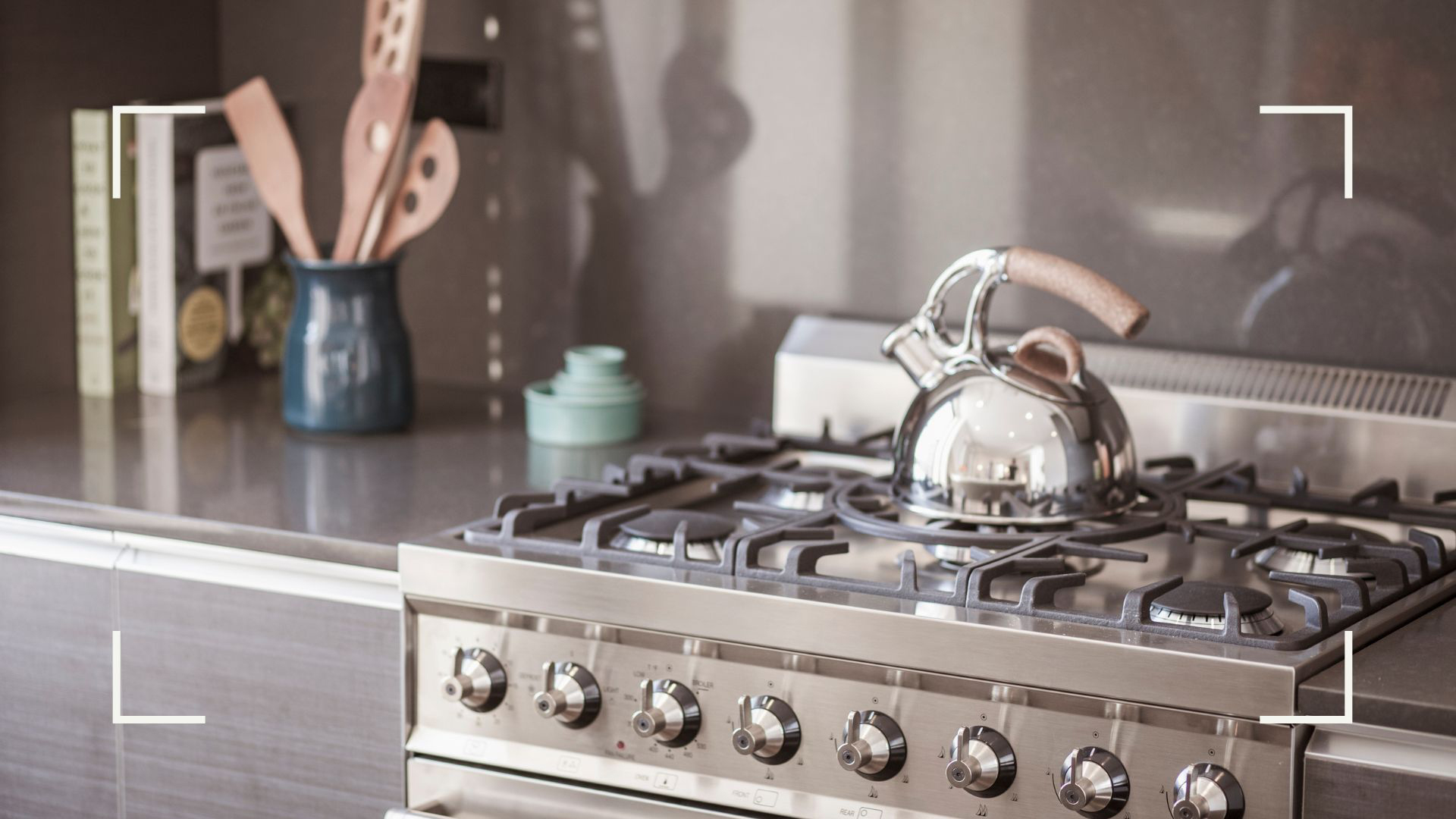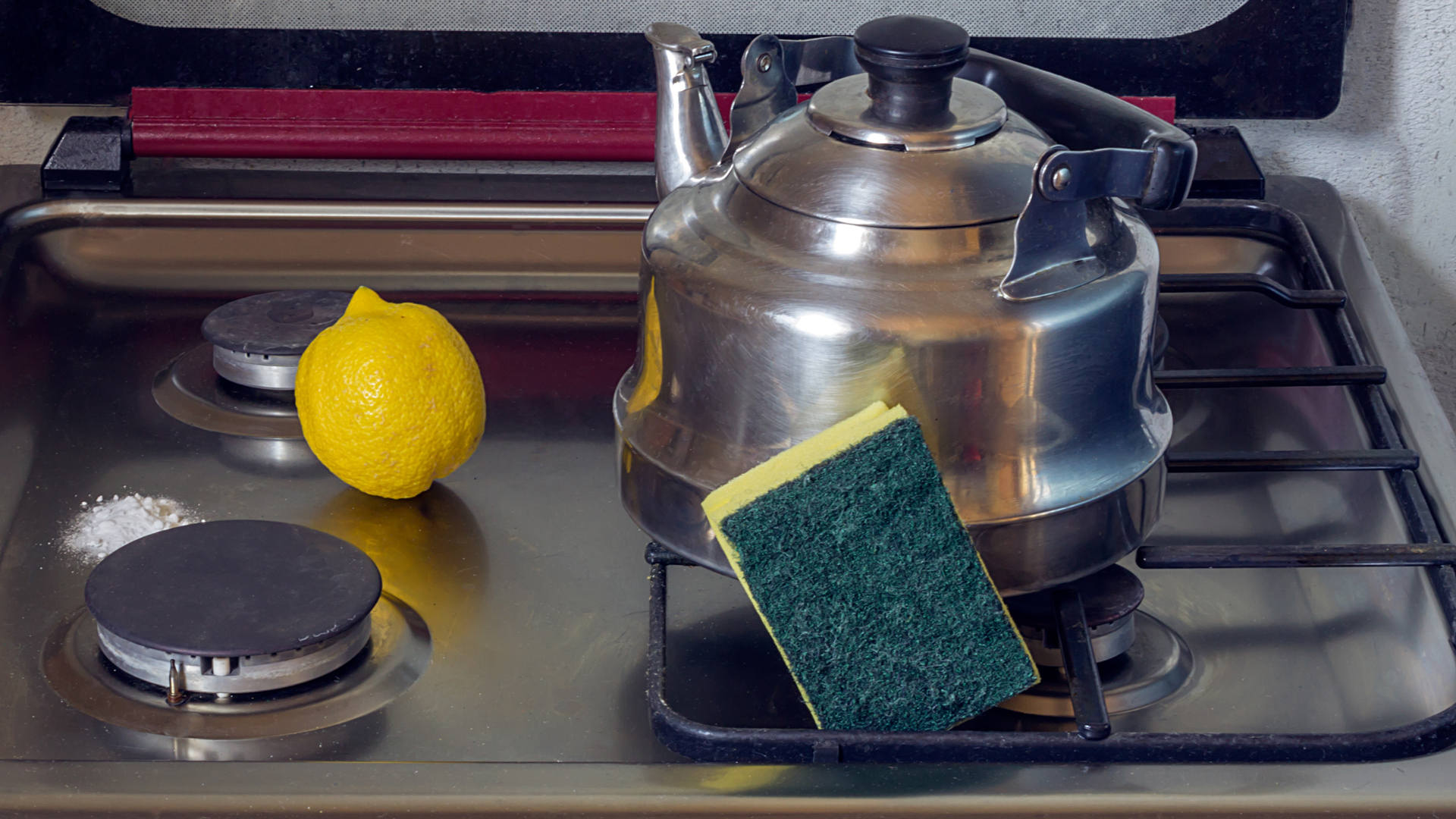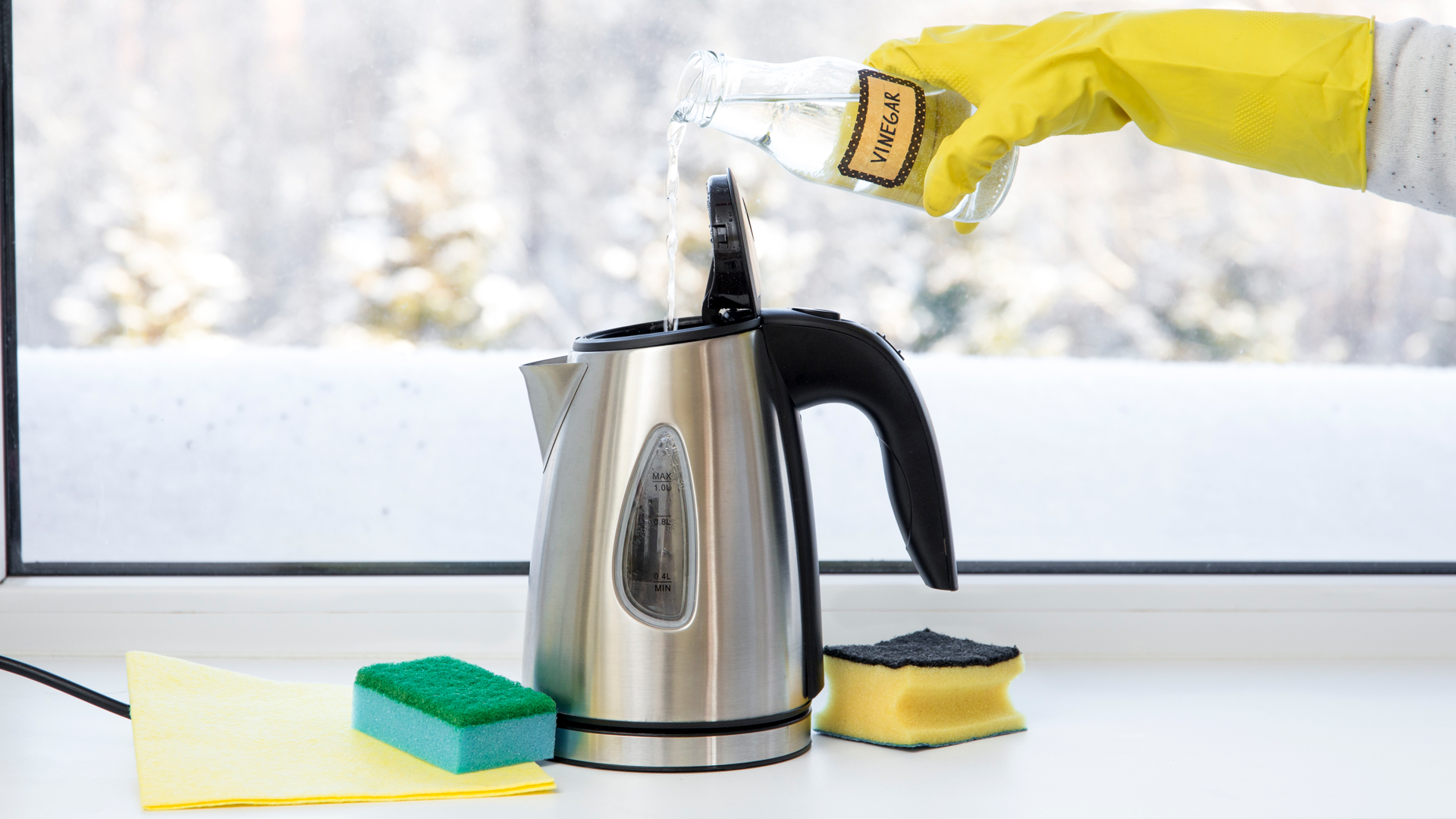How to descale a kettle – easy ways to banish and prevent limescale
Follow our easy methods and top tips for how to descale a kettle


Tamara Kelly
Knowing how to descale a kettle is a must - because the one thing guaranteed to put anyone off a comforting cup of tea or coffee is reaching for the kettle and spotting scummy limescale clogging up the machine.
Descaling is part of the process of how to clean a kettle to ensure every brew is delicious. And although it's a common problem, it's also an easy one to resolve and thankfully there are natural remedies and cleaning hacks that do the job perfectly.
You'll likely find most limescale inside your kettle as flakes of white material. But you might also find it on the outside of your kettle too, or on the rim of the kettle where you place the lid.
Limescale isn't generally harmful (so it won't matter too much if you drink a bit with your drink), but long-term exposure to lots of it isn't exactly healthy. Plus, the residue can actually eat away at your best kettle, which may mean you need to replace it more often.
So how do you descale a kettle and get rid of limescale and prevent it from returning?
How to descale a kettle
Descaling your kettle is fairly simple, and you can do it using ingredients you probably already have in your cupboards.
1. Use a lemon or other natural cleaning methods

There's something about the process of cleaning a kettle that makes us want to go down the natural route - to save mixing chemicals with an appliance used for making drinks. But of course, all methods are safe if you rinse properly after cleaning.
Sign up for the woman&home newsletter
Sign up to our free daily email for the latest royal and entertainment news, interesting opinion, expert advice on styling and beauty trends, and no-nonsense guides to the health and wellness questions you want answered.
However, for those who want to go au natural and save money in the process, there are numerous natural cleaning hacks that work efficiently to solve the problem of how to descale a kettle with ease.
The most obvious ingredient is distilled vinegar, which we've provided instructions on how to use a little further down. But if you don't have any vinegar at home, Lynsey Crombie, a cleaning expert publicly known as the 'Queen of Clean', explains that you can also use lemon juice to descale a kettle. "You can use shop-bought lemon juice that you get from the cooking aisle or citric acid," she says. You can of course use squeeze the juices from lemons you have in the pantry, to save even heading to the shops.
Simply pour equal parts water and equal parts lemon juice into the kettle, bring to a boil and leave for up to 20 minutes to work its magic. Pour away the now loose limescale and give the newly cleaned kettle a thorough rinse.
2. Use a specialist descaler
If natural cleaning methods don't feel up to the job you can use a commercial descaler, specially developed to do the job for a professional finish in a faster time.
“Descale your kettle and restore your appliance in eight minutes using Oust All Purpose Descaler, which removes limescale debris on the internal coils of the kettle and maintains shorter boil times," recommends Lynsey.
Boil the kettle, wait eight minutes for it to remove the limescale then give it a thorough rinse before using it – just ensure all the product has been rinsed away.
3. Rinse and wipe the outside
After using any method, you'll want to make sure you rinse the kettle out as thoroughly as possible to get rid of any unpleasant vinegar or chemical smells before your morning cup of coffee. Boil it a few times with fresh water (and only water) and discard after to refill with fresh water before using.
Once the inside is free from limescale all that's left to do is tend to how to clean a kettle on the outside. This is simple: simply wipe it down with a clean dry cloth. Avoid using any cleaning products, natural or otherwise on the outside, especially if your kettle is a gas-top stove design, to avoid anything catching in the flames when it's heated.

How to descale a kettle with vinegar
As a favored natural cleaning product, it's no surprise that vinegar can be used to eliminate limescale. "Distilled vinegar can be used to descale your kettle," says Hayley Simmons, director of commercial range at Magnet. "Add your vinegar and bring it to a boil. Next, let it sit for an hour, then empty and rinse and your kettle should look brand new!"
We suggest adding half white vinegar and half cold water to the kettle. Fill it until it is almost full, just making sure you use equal quantities of both liquids. This combination will work at cleaning off the limescale – because vinegar is naturally acidic, and so can easily dissolve mineral deposits, dirt, or grime.
Leave it for an hour, but ideally overnight as the longer it can sit there the better. Just remember to complete this process at a time when no one will need to use the kettle - and be sure to tell your household that the kettle is out of bounds whilst it's happening! If you're short on time, however, Lynsey advises that even 20 minutes will do the trick.
Whenever you come back to the kettle, boil the mixture inside in order to get rid of as much limescale as possible. Then, pour it away down the sink after it has boiled. Rinse thoroughly to ensure your next hot beverage doesn't have undertones of acidic vinegar flavoring. Be prepared for a bit of a vinegary stench!
You can also use this method when tackling how to clean an iron, which can also experience a limescale build-up due to the water inside. And of course, vinegar is a wonder product if you're wondering how to clean stainless steel.
How often should you descale the kettle?
No one wants their kettle full of vinegar on a regular basis, but they don't want a cup filled with limescale either, so how often do you actually need to descale a kettle in order to keep it in tip-top shape?
According to Lynsey, descaling a kettle is "a task to be added to our monthly cleaning schedule." But it will also depend on how full of limescale your kettle may be. If you live in a particularly bad hard water area, you may feel your kettle needs cleaning more often, as it will likely build up that much more limescale.
However, Sophie advises cleaning less frequently, especially if you are using commercial descalers. She suggests, "If you live in a hard water area, descale every three months, and every six months in soft water areas."
With the cost of living on the rise and climate awareness, it's also worth considering how cleaning the kettle might aid more sustainable living choices too. “You can save money on your household bills by using your kettle more effectively," says Sophie. "Limescale build-up in kettles slows down their efficiency so they will use more energy to boil the same amount of water."
"Additionally, don’t overfill your kettle. Only use as much water as you need when you’re making tea or coffee.”
In conclusion, cleaning once a month is a great target if you're looking for some guidance on how to descale your kettle – and how often for a better brew and a better kettle lifespan.
What causes limescale?
Limescale is the white flakey-looking material that might be sat on the inside of your kettle - you may be familiar with it appearing in other areas such as bathroom taps and toilet pans. Basically anywhere there is an element of constant exposure to water because as Harveys Water Softeners explains "limescale is most often caused by hard water. Inside hard water is calcium or magnesium, and when you boil the water inside the kettle, it spreads across it and, essentially, sticks to the inside surfaces."
The white compound you see is essentially a build-up over time of layers of mainly calcium and magnesium minerals on top of one another. And while it's unpleasant, especially when it starts to dislodge and flakes gradually start appearing in the water you pour, it is not harmful as such. The experts at Halcyan Water agree, stating "Ingesting limescale may be unpleasant to the palate but for all intents and purposes isn't harmful."
How to prevent limescale
Our kettles need to be cleaned and maintained in the same way we'd take care of other kitchen appliances - such as our best blenders and food processors.
Preventing limescale in a kettle can be tricky, but it is possible to reduce it within your kettle by doing a few simple things. You can work to prevent limescale by:
- Filtering your water before putting it into your kettle, to try and eradicate the minerals that cause build-up
- Drying your kettle after use as much as possible.
- Installing a soft water filter into your home so you are filling your kettle up with soft water instead.
Amy Hunt is an experienced digital journalist specialising in homes, interiors and hobbies. She began her career working as the features assistant at woman&home magazine, before moving over to the digital side of the brand where she eventually became the Lifestyle Editor up until January 2022. Amy won the Digital Journalist of the Year award at the AOP Awards in 2019 for her work on womanandhome.com.
- Tamara KellyLifestyle Editor